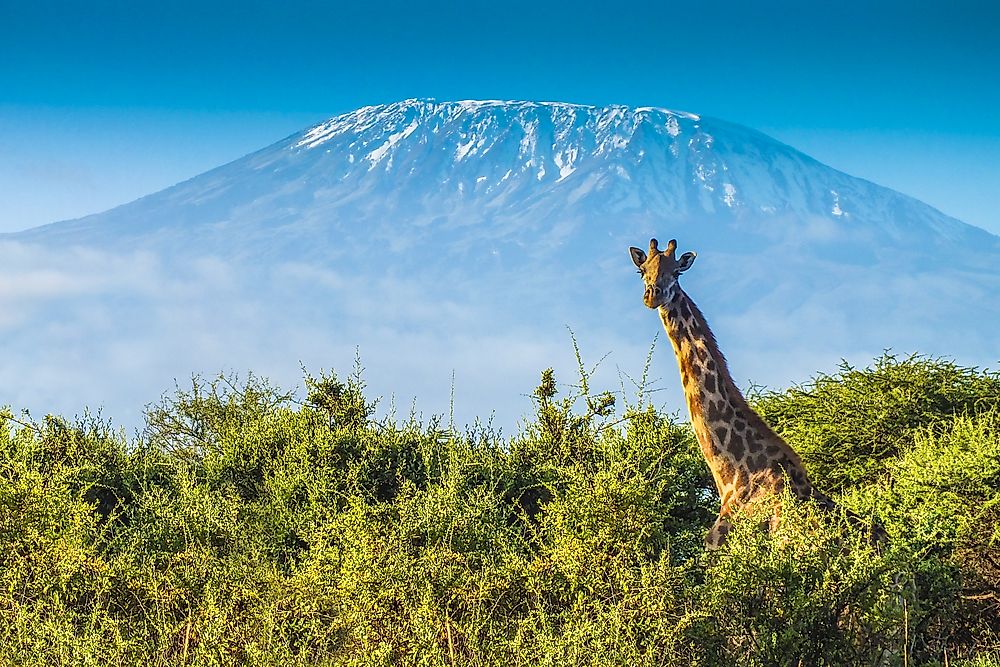Who is the Tallest Animal in the World?

The giraffe is the tallest existing terrestrial animal. It belongs to the genus of African even-toed ungulate mammals and classified under the Family Giraffidae. It is also the largest ruminant and is popular for its towering neck and long legs. Its range covers the countries of Chad, Niger and Somali, inhabiting mainly the savannah and woodland. Although giraffes are the tallest animals in the world, they may fall prey to several wild animals including lion, leopard, and African wild dogs. Because of its peculiar appearance, the giraffe has featured in several cultures, paintings, and books. Giraffes are classified as 'Vulnerable' by the IUCN.
Physical Characteristics
A fully grown giraffe can measure up to 18.7 feet and weighs up to approximately 4,200 pounds. The male giraffe is usually taller and heavier than the female. On average, an adult male weighs 2,628 pounds while the female weighs 1,825 pounds. Despite the long neck and leg, the giraffe has a relatively short body. Both the front and the hind legs of a giraffe are of the same length. The legs have suspensory ligaments which are useful in supporting the body. The eyes are large and bulging and are located on either side of the head, giving it a greater vision from the great height. The prehensile tongue measures about 18 inches long and is purplish-black in color. The tongue aids in the grasping of foliage and also for grooming. The upper lip, which is also prehensile, also comes in handy during foraging. There are dark patches on the coat which can sometimes be orange, brown, or nearly black. The patches are separated by a white light hair. As they grow older, the male giraffes turn darker. Giraffe’s skin is mostly gray and thick, allowing it to run through thorn bushed without injuries.
Giraffe’s Neck
The neck is extremely long and can reach up to 6.6-7.9 feet, accounting for much of the animal’s height. The long neck is as a result of the unequal lengthening of the cervical vertebrae and not additional vertebrae. A cervical vertebra is about 11-inch long. The cervical vertebrae account for 52-54% of the vertebral column of a giraffe. The elongation of the cervical vertebrae takes place after birth since the mother giraffe may have a difficulty giving birth to a baby with the same neck proportion as the adult. The head and the neck of a giraffe is always held up by muscles and strengthened by nuchal ligaments.
Several hypotheses have been put forward to try and explain the origin and the maintenance of the giraffe’s long neck. The first hypothesis is the “competitive browser hypothesis” by Charles Darwin. He suggested that the elongation of the neck was as a result of competition for food from other small browsers. The competitive browser theory was challenged recently.
Another hypothesis is the sexual selection hypothesis which links the elongation of neck to the secondary sexual characteristic of the giraffe. Necks are used by the males to establish dominance through “necking,” a combat of a sort involving the males. To support this theory, the male giraffe’s neck is stronger, heavier, and longer than the female’s neck.











